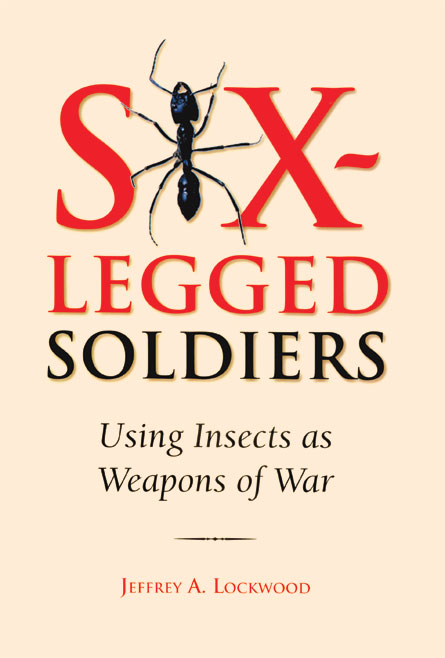Book Review: Six-Legged Soldiers: Using Insects as Weapons of War by Jeffrey A. Lockwood
Review by Sid Perkins
Sometimes the deadliest weapons are the most unobtrusive:
Cholera-covered flies in the ceramic containers that Japanese bombers
dropped on southern China in May 1942 triggered epidemics that
ultimately claimed more than 200,000 lives — similar to the short-term
death toll from the two atomic bombs that ended World War II.
Six-Legged Soldiers
is a fascinating account of the many ways that scientists and military
strategists have used insects to torture, starve and kill targets. As
Lockwood notes, many techniques of modern germ warfare would depend in
large part on disease-ridden insects such as flies, fleas and
mosquitoes. Microbes often can’t survive long periods outside of their
hosts, but insects can act as delivery vessels.
Sometimes,
however, the insects themselves have been the weapons. Combatants
including Romans and pirates heaved beehives at their enemies, and the
Viet Cong often created booby-traps from nests of wild bees along
well-traveled trails.
Human diseases aren’t the only possible
downside to insect-based biowarfare: The economic impact of
crop-destroying pests successfully deployed by bioterrorists could
easily measure in the billions of dollars.
In this book,
Lockwood thoroughly and objectively assembles an engaging chronicle on
a topic for which official documentation is often sparse and the
opportunity for propaganda is rife. —Sid Perkins
Oxford Univ., 2009, 377 p., $27.95.
